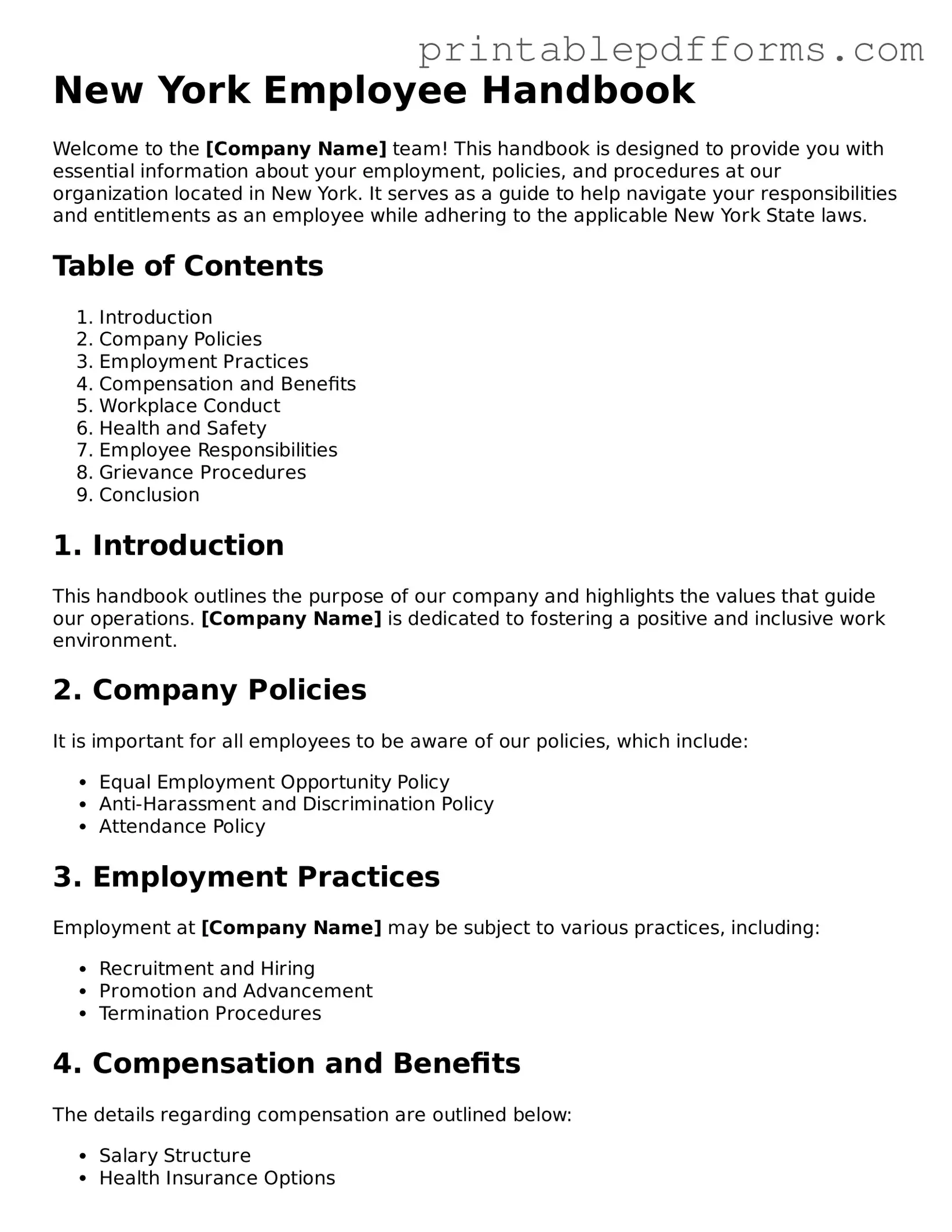New York Employee Handbook
Welcome to the [Company Name] team! This handbook is designed to provide you with essential information about your employment, policies, and procedures at our organization located in New York. It serves as a guide to help navigate your responsibilities and entitlements as an employee while adhering to the applicable New York State laws.
Table of Contents
- Introduction
- Company Policies
- Employment Practices
- Compensation and Benefits
- Workplace Conduct
- Health and Safety
- Employee Responsibilities
- Grievance Procedures
- Conclusion
1. Introduction
This handbook outlines the purpose of our company and highlights the values that guide our operations. [Company Name] is dedicated to fostering a positive and inclusive work environment.
2. Company Policies
It is important for all employees to be aware of our policies, which include:
- Equal Employment Opportunity Policy
- Anti-Harassment and Discrimination Policy
- Attendance Policy
3. Employment Practices
Employment at [Company Name] may be subject to various practices, including:
- Recruitment and Hiring
- Promotion and Advancement
- Termination Procedures
4. Compensation and Benefits
The details regarding compensation are outlined below:
- Salary Structure
- Health Insurance Options
- Retirement Plans
5. Workplace Conduct
Maintaining a respectful workplace is crucial. Employees are expected to follow the code of conduct which includes:
- Respect for Colleagues
- Dress Code Standards
- Substance Abuse Policy
6. Health and Safety
Your health and safety are paramount. Adhere to the following guidelines:
- Emergency Procedures
- Workplace Safety Rules
- Reporting Accidents and Injuries
7. Employee Responsibilities
As an employee, you have certain responsibilities, including:
- Completing Assigned Tasks
- Communicating Effectively
- Participating in Training Programs
8. Grievance Procedures
If you encounter any issues, follow these procedures to voice your concerns:
- Contact your Supervisor
- Submit a Written Complaint
- Participate in Mediation if Necessary
9. Conclusion
This handbook is a resource to help you navigate your employment with [Company Name]. Should you have any questions or require clarification on any policy, please reach out to the HR department.
Thank you for being part of our team!
